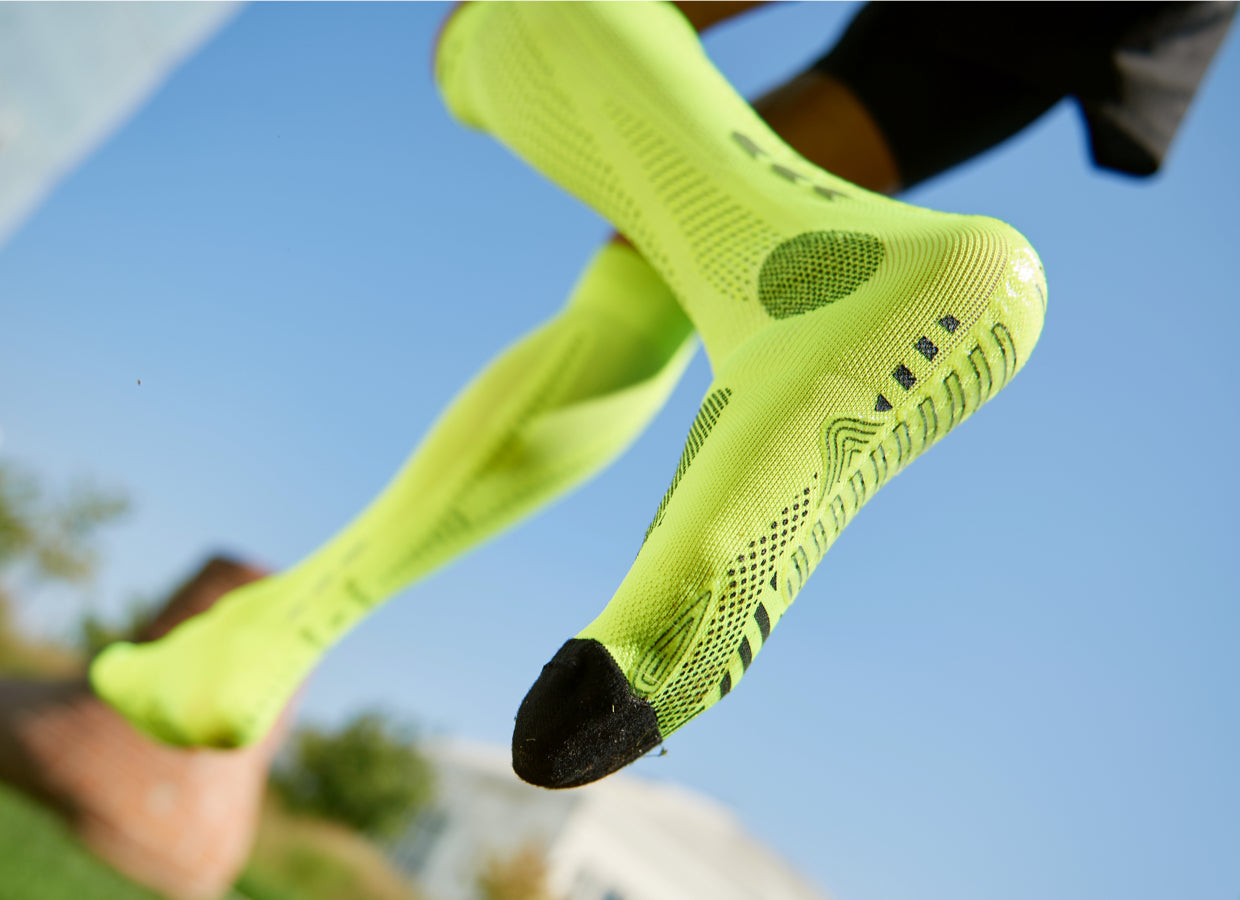The jumper's knee is an injury located at the insertion point of the patellar tendon, caused by excessive stress on the tendon, resulting in overload and subsequent inflammation of the knee. The patellar tendon connects the kneecap to the tibia, is extremely resistant, and allows the quadriceps muscle group to straighten the leg. During jumping, this muscle group actively straightens the knee joint to initiate the lift-off from the ground and subsequently stabilizes the landing, decelerating the horizontal acceleration associated with it.
Inflammation of the patellar tendon is frequently observed in individuals who play basketball, volleyball, or engage in other activities involving frequent jumping, directional changes, and repetitive loading of the lower patellar tendon, such as athletics. It should be distinguished from Osgood-Schlatter syndrome, a condition typical in young people during growth phases, which causes inflammation of the tibial tuberosity and, in most cases, resolves spontaneously within one or two years. The jumper's knee, on the other hand, requires specific treatment and preventive measures.
Causes and symptoms of jumper's knee

Repeated jumping, frequent changes in direction, and lifting weights with excessive workloads are all common causes of overloading the patellar tendon in athletes aged between 15 and 35 years old. In all these cases, due to the repeated efforts, micro-injuries can occur in the tendon, leading to collagen degeneration. Other factors include shortening of the quadriceps muscles and being overweight, as well as insufficient flexibility of the thigh muscles and the quadriceps muscle or poor alignment (knock-knee or flat feet).
The first symptom of patellar tendinopathy to appear is pain in the front of the knee, which initially occurs at the beginning and end of sporting activity. As the symptoms persist, it may also appear during training and even at rest, accompanied by stiffness. Pain and local tenderness increase during activities that put more strain on the patellar area (kneeling, running, jumping, etc.) and in case of contraction of the quadriceps muscles. Local swelling and pain upon palpation may also be present.
Treatment of jumper's knee
In the treatment of jumper's knee, surgery is generally recommended as a last resort, reserved for the most severe cases. To date, there is limited convincing scientific data in favor of resorting to surgery compared to conservative treatment, which instead is adaptable based on the extent or grade of the injury
- Grade 1: It is possible to continue training, but applying ice to the injury after each workout or game, preferably combined with massages on the painful area and the use of patellar tendon strapping or a patellar stabilizer;
-
Grade 2: It is necessary to modify training activities to reduce the load on the tendon. For example, replacing jumps and sprints with steady-paced running, swimming, or water jogging, or avoiding repetitive knee bending and straightening movements;
-
Grade 3: It's essential to completely stop physical activities that overload the tendon and replace them with swimming or water running. Consulting a sports physician or a sports physiotherapist for further rehabilitation advice can be helpful;
-
Grade 4: Rest is crucial for at least 3 months, accompanied by visits to a sports physician or a sports physiotherapist, and potentially consulting an orthopedic surgeon for an evaluation for surgery based on MRI findings.
Prevention of jumper's knee
Given that the basis of this type of inflammation involves an overload mechanism that creates micro-injuries, acting preventively means starting by minimizing the risk of onset. This involves:
- Exercises to strengthen the hip adductors, such as abdominal, thigh, and calf muscles;
- Stretching exercises for the quadriceps and thigh muscles;
- Use of high-quality sports footwear with arch support;
- Before each workout, warm-up session including quadriceps and calf muscle stretching;
- Proper nutrition, hydration, and rest.
FLOKY Jumper: technical socks to prevent micro-injuries to tendons
The biomechanical socks, FLOKY Jumper, are custom-designed for individuals engaged in sports where jumping is predominant, such as basketball, volleyball, and handball. Thanks to their special structure, they reduce vibrations, protect muscles and tendons, and safeguard athletes from injuries. They harness the principles of biomechanics to enhance foot functions and muscular propulsion, shielding athletes from injuries and wear and tear while minimizing vibrations that may lead to micro-traumas and inflammations. Its action is comprehensive:
- Plantar compression: The screen-printed band on the sole of the foot optimizes venous return, promotes the exchange of metabolic waste, increases muscle oxygenation, and speeds up recovery;
- Jumping effect: The Tape System positioned above the heel facilitates the foot's return to the extended position, aiding in discharge, cushioning impact with the ground, and ensuring a sense of propulsion;
- Metatarsal supports: The lateral screen-printed applications are designed to protect the plantar arch and metatarsal heads, helping to prevent injuries;
- Modulated anti-slip: The anti-slip printing increases grip on the shoe, providing maximum stability to the athlete, even during sudden changes in direction and jumps.




